Read Reviews
The Best Lawn Mowers for Wet & Long Grass
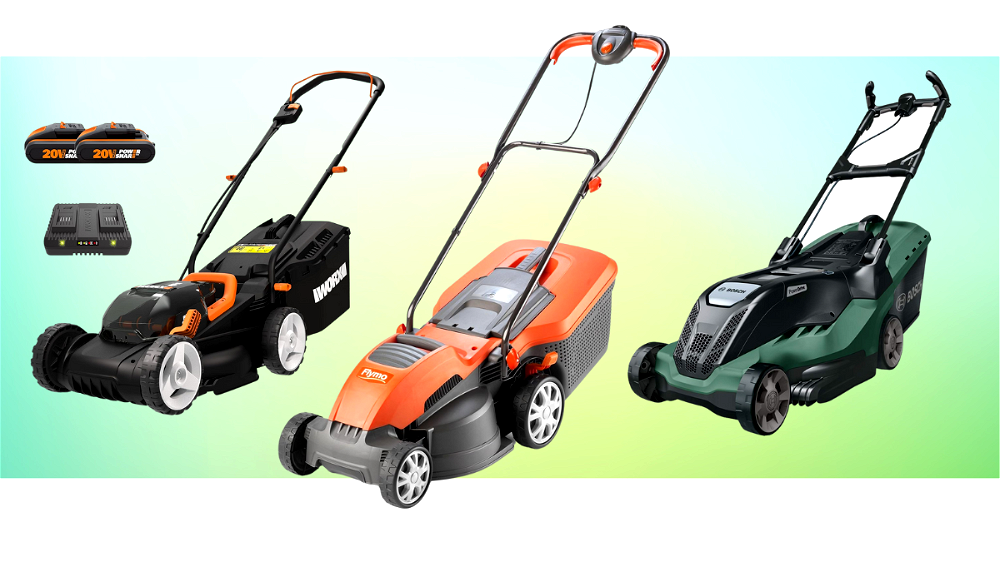
-
WORX WG779E.2 Cordless Lawn Mower
-
Flymo Speedi-Mo 360C Electric Wheeled Lawn Mower
-
Bosch Advanced Rotak 650 Lawn Mower
-
Hyundai HYM430SP 4-Stroke Petrol Lawn Mower
-
McCulloch Rob S400 Robotic Lawn Mower
Lawn Mowers for Wet & Long Grass Reviews
- Good option for small gardens thanks to its narrow 34 cm cutting width
- Battery-powered design gives cordless operation without fumes or needing to buy petrol
- Delivers a good compromise between weight and power - it's very light
- Assembly is quick and easy
- Cuts grass up to approximately 10 cm long
- Most components are made from plastic
- Battery life could be longer. Depending on the length of your grass, you may only get 15 minutes of battery
- Roller at the back is narrower than the wheels so the striping isn’t as neat as it could be
This lightweight WORX WG779E.2 Cordless Lawn Mower weighs just 11.1 kg, making it a particularly light machine by any standards.
It runs off 2 x 20 V batteries, which come included, and has five cutting heights for tackling different grass lengths. These range from 20 – 70 mm and the higher settings can help get through damp grass. The height is adjusted using a single lever, making it a simple process.
The WORX WG779E.2 can cut damp grass as well as grass that is around 10 cm long. Worx have fitted it with ‘intellicut’ technology which is purposefully designed to adjust the power and speed based on the type of grass.
As a cordless, lightweight mower, this machine naturally doesn’t have the same power as heavier, petrol mowers; however, it’s featured here because it strikes a good balance between effectiveness and weight. If you’re after a particularly manageable mower, this is a great option to consider.
There is a ‘turbo’ mode when more power is required, as well as an ‘eco’ mode to save battery life where possible.
It has a narrow cutting width, of 34 cm, making it best suited to smaller gardens. The grass collector has a relatively small 30 L capacity, so it would need frequent emptying in larger spaces. Nevertheless, the batteries do hold enough power to cover larger distances than you might expect – Worx claim that one charge is enough to mow the majority of UK lawn sizes. Battery life is, of course, somewhat reliant on how hard the mower is having to work through certain terrain.
Overall, the WORX WG779E.2 is one of the best lawn mowers for cutting long and wet grass if having a lightweight, cordless machine is also a priority for you. Whilst it might not get through very long grass, it’s still a good option to consider for most gardens, due to the fact that it’s lightweight, easy to carry, and can tackle damp grass.
Did you find this review helpful?
- Can cut through longer, thick, wet grass
- Lightweight and easy to manoeuvre in and out of storage
- Very reasonable price compared to other models with similar capabilities
- Cuts close to edges like walls and fences despite not having a specific 'edging' feature
- Good cutting width and size for medium/large gardens
- Grass collector is 40 L which is a little small for medium/large gardens
- When pushing mower with motor off, it can scrape along the grass
- Turning in a tight space can require a lot of backwards and forwards movement due to its width
Targeted at medium-to-large gardens, the Flymo Speedi-Mo 360C is a powerful lawn mower that can cut through both damp and long grass.
It’s lightweight, at 11.5 kg, with a 1500 W motor and 36 cm cutting width. Even though this isn’t especially large, by lawn-mower standards, it works efficiently and can help cut even a large lawn relatively quickly. There’s rarely a need to go over the same spot twice.
Even when used on longer, thicker grass, the Speedi-Mo 360C produces a clean, uniform cut. This is helped by the five available cutting heights, ranging from 20 – 60 mm. It has a 40-litre grass collector, which is a little on the small side, but a 12-metre power cable – which is slightly better than the more-commonly-found 10 metre offering.
The Speedi-Mo 360C doesn’t claim to cut close to edges, but it still does a good job regardless. Some strimming may be required afterwards, but it does a reasonable job considering it isn’t even a mentioned feature.
Considering the mowers weight, it is generally very easy to manoeuvre around the garden and move in and out of storage. The only thing to be aware of is when pushing it over grass without the motor on – it can scrape along the ground in these instances; however, it’s also light enough to pick up and carry.
All things considered, the Speedi-Mo 360C is one of the best lawn mowers for long and wet grass if you’re after value for money. It performs on a par with more premium models, yet is very reasonably priced. The fact that it is lightweight and yet still sufficiently powerful to cut through long grass is impressive.
Did you find this review helpful?
- High cutting height and powerful motor means mower cuts through long grass easily
- Side combs are capable of cutting very near to the edges of walls and fences
- Push buttons on handlebars make them easy to collapse for storage/change the height of without undoing any screws
- LeafCollect feature can pick up leaves from the ground
- Cord is just 10 m long so may be too short for many gardens/ an extension cable will often be required
- No mulching feature
Not only does the Bosch Advanced Rotak 650 Lawn Mower have a range of cutting heights and the ability to trim close to lawn edges, it also has a built-in LeafCollect blade for gathering strewn leaves as well.
As a result, this is one of the best lawn mowers for wet and long grass, as well as for creating a neat lawn overall.
There are seven cutting heights available, ranging from 25 – 80 mm, which go higher than the majority of lawn mowers. For this reason, it easily cuts through long grass, and the powerful 1700 W motor helps pull it through. The cutting heights are simple to change via a single lever.
The grass collector is 50 L, which is suitable for small/medium lawns. It has fabric sides with a plastic top. The mesh material is more difficult to clean than an all-plastic box, but it is easier to store. The 41 cm cutting width also makes this mower suitable for small/medium gardens.
Like many Bosch mowers, the Rotak 650 has ‘side combs’ that are designed to cut close the edges. The Rotak 650 achieves this well, meaning it will produce a level cut even up against fences and walls, with limited strimming required afterwards.
In addition, the LeafCollect blade works effectively to scoop up piles of fallen leaves on the lawn, meaning the Rotak 650 is a versatile machine for creating an all-round neat finish in the garden.
The handles are adjustable, so the height can be changed to find a comfortable mowing position. This is done easily, using simple push buttons as opposed to more time-consuming screws. Plus, the handles can be folded to make the mower more compact for storage. When stored, it measures 40 x 70 x 55 cm.
Overall, the Bosch Advanced Rotak 650 has a lot of well-designed features that all work to great effect. For this reason, it’s easy to understand why it has a higher price tag than many other mains-powered models.
Due to its size, it may be too wide for some small gardens, which may not justify the cost if you only have a small lawn. However, it is extremely intuitive and easy to use, and creates a neat, clean cut.
Did you find this review helpful?
- Easy to start, even when the engine is still warm
- Produces a smart, neat cut even on long and wet grass
- Quieter than others on the market so is unlikely to disturb neighbours and family members
- Easy to assemble in around 10 minutes with no tools required
- Manageable to carry with a weight of 16 kg and generous handle on the base
- Not especially easy to manoeuvre in tight corners due to size
- Wheels are made from plastic and have poor tread
- Speed isn’t adjustable and some users have found it difficult to keep up with
As a powerful grass-cutting machine, the Hyundai HYM430SP 4-Stroke Petrol Lawn Mower is one of the best lawn mowers for wet and long grass.
Its 139 cc engine helps it charge through damp and overgrown grass – something that is particularly useful during the autumn/winter months. The six cutting heights, ranging from 25 – 75 mm, make it possible to tackle long grass without putting too much strain on the engine.
Starting the mower is straight forward, there’s no electric start (which means no battery to charge) but after priming and pulling the recoil it seems to reliably start each time – even when the engine is still warm.
It’s self-propelled, so doesn’t require all the effort to come from you. Something that can be invaluable on sloped, uneven lawns. The self-propelled speed is relatively fast, which some people can find difficult to keep up with, but it’s efficient at getting the mowing done quickly. However, due to the speed, it can be trickier to navigate tight spaces with the engine on.
The HYM430SP has a 42 cm cutting width, so is most suitable for small/medium gardens, based on its size. The 45 L grass collector is relatively small, so in medium gardens it will likely need emptying at least once during the job.
At 27 kg, it isn’t overly heavy for a self-propelled mower, and is relatively manageable – certainly compared to heavier models. Some customers have reported that the plastic wheels can slip on wet ground, so more physical effort may be required in some instances.
Nevertheless, overall it is a well-made, quality machine which is robust and powerful enough to cut through longer grass.
Did you find this review helpful?
- Long battery life of up to 90 minutes
- Virtually silent so can be used overnight or whilst you’re relaxing in the garden
- Effective for all kinds of lawn layouts including irregular shapes, sloped lawns and areas with lots of obstacles
- Setting up and programming the mower is simple and intuitive, though it may take a couple of hours
- Can cut in wet conditions on damp grass
- Not suitable for cutting long grass - has a maximum cutting height of 50 mm
- Initial set up of laying cable can take a couple of hours so shouldn't be rushed
- Requires an outdoor socket to be placed close enough to the lawn to reach the charging station
What an amazing age we live in – if you don’t want to mow the lawn, you don’t have to! The McCulloch ROB S400 Robotic Lawn Mower is a fully automatic, robotic lawn mower. All it needs is some simple setting up, and off it goes.
Installation isn’t complicated, but it can take a couple of hours – especially if your garden has a lot of obstacles or an unusual shape. You’ll need to fit the cable around the lawn, to mark the parameters for the S400. This mower is recommended for small/medium gardens of up to 400 m².
The keypad control for programming different running times and cutting patterns is intuitive to use – it may just take a little time to work out the ideal settings for your specific garden.
It works reliably as a fully automated system, with the robot returning to its charging port on after running for approximately 60 minutes each time. One of the only few problems with the S400 (and all robot mowers) is that you need to have an outdoor power outlet in a suitable position near the lawn.
If you have a sloped garden, the ROB S400 can deal with up to 35% inclines and it’s also not phased by wet grass. Although damp cuttings may eventually clog the blades slightly, and require a brief wash-down, it still copes well and doesn’t require perfectly try conditions.
There are a choice of cutting heights, ranging from 20 – 50 mm, and the clippings are so small and fine that they are barely noticeable on the grass after mowing (the S400 doesn’t collect them).
It’s one of the best lawn mowers for wet grass if you want an automatic, robot machine. The S400 keeps on top of grass length, so it won’t get too long, but you may need to do an initial cut before setting it up so that it’s suitable for the robot’s 50 mm maximum cutting length.
Did you find this review helpful?
How to Choose the Best Lawn Mower for Wet & Long Grass
There’s a lot of words we could use to describe the weather in Britain, and unfortunately ‘predictable’ is not one of them. Trying to keep on top of the mowing is tricky at the best of times, let alone when it barely stops raining for two weeks straight.
Fortunately, there are certain mowers that can manage these conditions reasonably well, and are capable of cutting long, wet grass without causing too much strain on the mower. It’s just a case of finding them!
Here you’ll find more information about what makes the best lawn mower for long and wet grass, so you can make an informed decision.
READ NEXT: UK’s Best Lawn Mowers
Cutting Height
One of the most important things to consider when buying a mower for long/wet grass is its range of cutting heights.
These can vary significantly from mower to mower and, generally speaking, more expensive mowers will have more options when it comes to cutting height. Whilst a budget lawnmower may have a choice of three cutting heights, a premium model could have up to eight or nine.
In the UK, many gardeners choose not to cut their lawn shorter than 25 mm. Most lawn mowers have a minimum cutting height close to this number. Maximum cutting heights tend to be between 70 – 80 mm, although there are some mowers that only offer around 50 – 60 mm.
A lawn that is too short can be prone to damage, either from wear and tear or from hot weather and draught. Shorter grass is more exposed than longer grass.
There are several reasons why you might want a range of cutting heights:
- If the grass is long, you shouldn’t cut it dramatically short in the first run. This can cause a lot of stress to the grass and affect its health.
- You should avoid cutting the length of the grass by more than 1/3 in one go.
- With a range of cutting heights, you can slowly get grass down to the desired length.
- For the first cut of the season, you should use the mower’s maximum cutting height (and, ideally, this will cut off less than 1/3 of the grass).
- If the grass is really long, gradually working away at it can cause less strain on the mower, instead of trying to get it all gone in one go.
Electric vs. Petrol Lawn Mowers
There are pros and cons to either type of lawn mower, but it’s worth taking the time to think about which you’d prefer. Even if you’ve had a petrol mower all your life, you may find that it’s now more convenient to get an electric model.
Petrol Lawn Mowers
Using a petrol lawn mower gives the freedom of cordless mowing, combined with the power of a petrol machine.
Petrol lawn mowers are generally extremely powerful. They can cut through long, thick grass, and will manage damp conditions as well.
One of the main problems with a petrol mower, aside from the fumes and negative environmental impact of using a petrol machine, is their weight. Petrol mowers are large and heavy; therefore, they can be difficult to move around the garden.
Getting a self-propelled mower can certainly make things easier; it will pull the mower around so you don’t have to push. This is particularly useful in sloped gardens, or gardens with thick grass.
Nevertheless, petrol mowers may not be appropriate for people who find it difficult to lift heavy objects. Similarly, they may be difficult to manage in gardens with lots of steps and different levels. Electric models can be a lot more manageable.
Mains-Powered Mowers
Mains-powered corded mowers are the ‘happy medium’ between petrol- and battery-powered mowers.
There are no fumes, and they’re better for the environment than petrol mowers, plus they tend to be more powerful than battery-powered mowers (although, nowadays, many battery-powered models are catching up).
The main disadvantage of using a mains-powered mower is that you have to be connected to a socket by a power cable. This can make it difficult to easily access all areas of the garden, and you also need to be careful not to cut the wire.
Many mains-powered mowers can deal with long, damp grass. Their capabilities may depend somewhat on their maximum cutting height, and some models may need to do a couple of passes to make sure they cut everything evenly.
READ NEXT: Best Hover Mowers
Battery-Powered Mowers
In recent years, there has been a surge of powerful battery-powered cordless lawnmowers that can better keep up with the performance of mains-powered machines (and they have the added benefit of being cordless).
Some battery-powered mowers have the strength to cut through longer grass; however, they need a sufficiently large battery to do so. Cutting through long grass will put more strain on the mower, which will cause the battery to run out quicker.
A 6.0 Ah battery can achieve up to an hour’s run time (and sometimes more). However, such large batteries will rarely come included with the mower. They’ll need to be purchased separately and can be expensive.
One of the main advantages of battery-powered mowers is that they are lightweight. This makes them easier to move around the garden and lift up steps. For some, this might be more worth having than any extra power.
READ NEXT: Best Robotic Lawn Mowers
Grass Clippings: Mulch, Discharge or Collect
Many mowers offer a few different methods for disposing of grass clippings. Having options can help you control the health and appearance of your lawn.
The classic method is collecting the clippings in a bag or box attached to the mower. This keeps the lawn looking tidy, and the clippings can be added to the compost heap. However, it can be time consuming to frequently empty the grass collector, and as it fills up, it can make the mower harder to push.
If the box is left off the mower, the clippings will be discharged onto the lawn. They can either be collected later, or left on the lawn. If left on the lawn, there is a danger the clippings may go sodden and brown which is messy and not great for the grass.
Alternatively, some mowers have a mulching function (However, this isn’t present on all models). When the mulching ‘plug’ accessory is attached to the lawn mower, it will shred the grass clippings into tiny pieces before discharging them onto your lawn. This can help to fertilise your lawn and retain moisture.
READ NEXT: Best Lawn Mowers for Stripes
Grass Collector Size
Although there are other ways of dealing with grass clippings, you may choose to collect them.
Any size grass collector will work, but if the bag is too small you will have to empty it often.
A 45 L grass collector may be too small for a medium garden – particularly if the grass is long. This size is best for small spaces.
If you have a medium garden, a 55 L+ grass collector should be sufficient. There are large mowers that have grass collectors of 70 L+.
Lawn Mower for Wet & Long Grass FAQs
Long and wet grass can be a serious strain on some mowers, reducing their lifespan and causing clogs.
To mow a wet lawn, you should first remove any excess dew or moisture. To do this, drag a hosepipe (horizontally) across the lawn. This is to sluice water away. From here, you can either mow the grass straight away or wait for it to dry.
- Raise the mowing height on the mower to ensure you’re not cutting the grass too short. Ensure the blades are freshly sharpened. You want to give your lawn a quick trim as opposed to a full cut. Once it’s dry, you can mow it down a little shorter.
- When mowing, keep the speed low and go carefully as your mower will need to work harder to get through the grass. Empty the collector bag more often than you would normally, as wet grass will weigh down the mower. Finally, mow in multiple directions, as wet grass can flatten down against the lawn.
- Once you’re finished, clean the underside of your mower deck to ensure there’s no damp grass built up. Remember that you will need to mow more frequently when the grass is wet.
To cut long grass, there’s a few additional things to remember. First of all, you should never try to cut more than a third off the height of your long grass in one go. This can damage the roots. Instead reduce the grass height by mowing on the highest setting.
Once you’ve been over the lawn once, reduce the height slightly more and make a second pass. Take your time, and clear out the blade regularly.
Leave the lawn for a few days to aid recovery, then mow again down to the final height you would like.
If your grass is so wet that you can’t walk across it without your shoes getting wet, the grass is too wet to mow.
If your lawn is very wet, it could damage your lawn mower and clog your mower deck. The finish may be uneven and messy.
However, provided you follow the advice above, you should be able to mow your lawn when the grass is damp – just avoid it when it’s really wet.
No, they aren’t. Although you might think that a lawn mower is a pretty hardy machine, none of them are built to be entirely waterproof. Petrol models will still have gaps whereby it’s possible for water to get into the machinery, and electric models are the same. Plus, simply due to the combination of water and electricity, you shouldn’t consider using an electric mower when it’s wet outside.
Basically, if the rain is coming down, leave your mower inside the shed and don’t feel obligated to cut the lawn – there will be another (drier) opportunity.
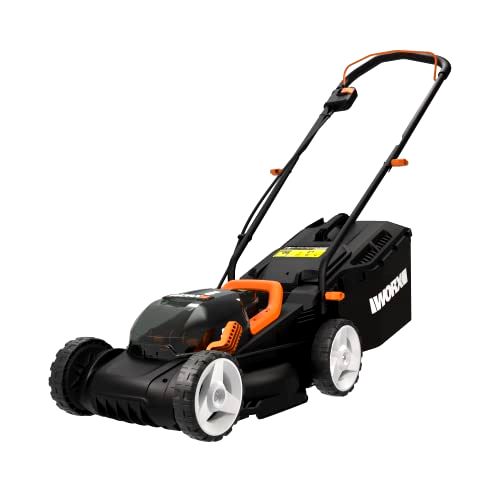
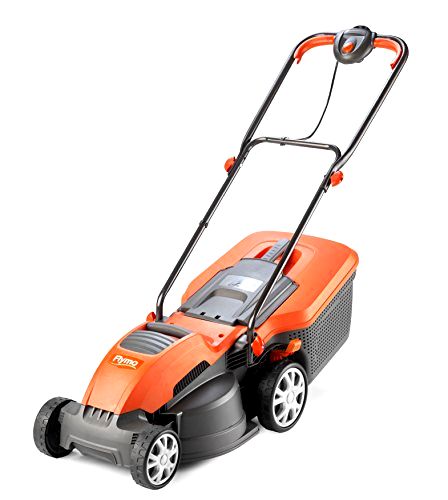
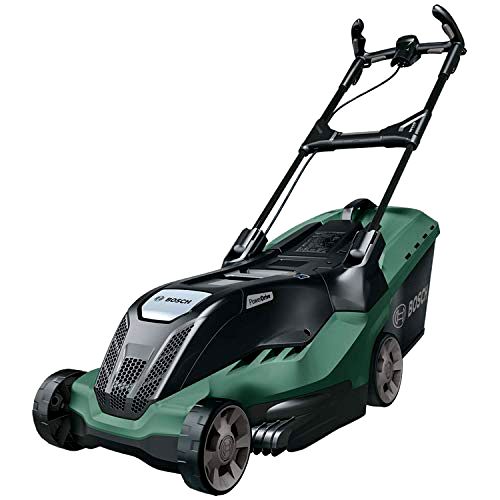
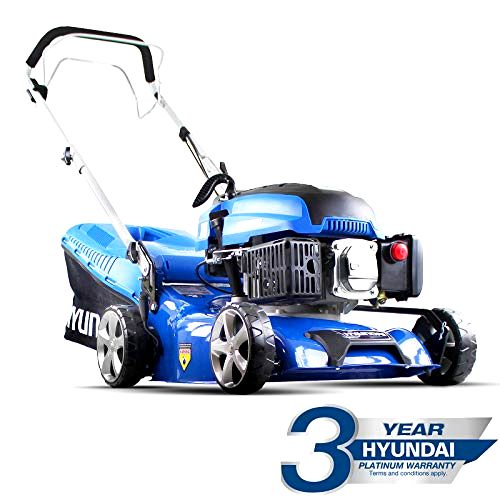
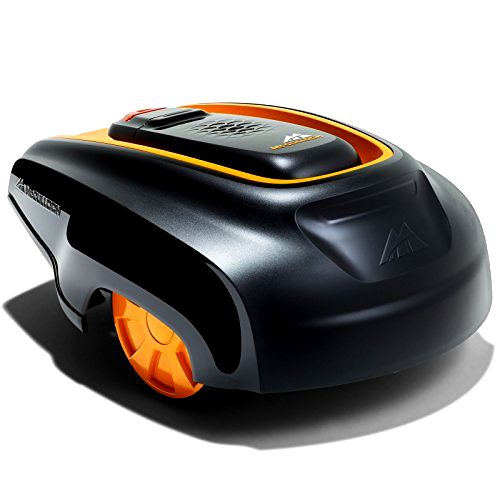

Share